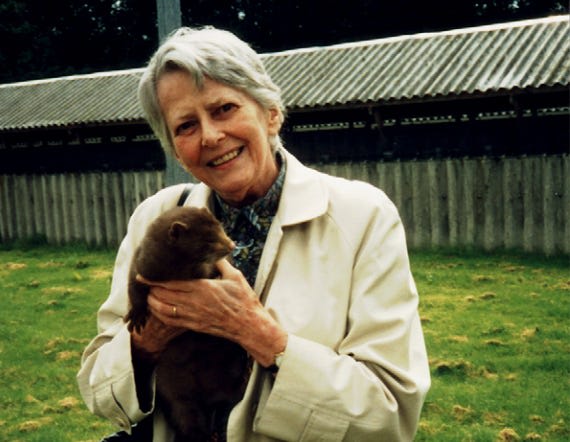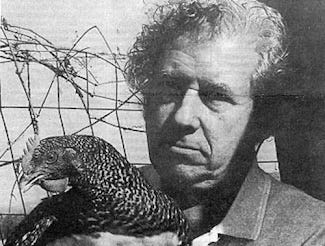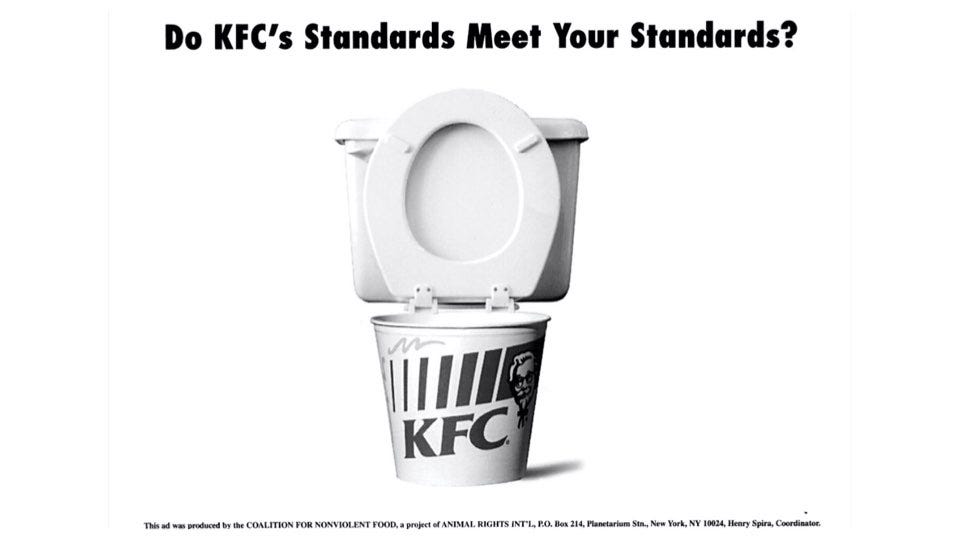Note: This post was crossposted from the Open Philanthropy Farm Animal Welfare Research Newsletter by the Forum team, with the author's permission. The author may not see or respond to comments on this post.
What would Ruth and Henry do?
How much can one person achieve for animals? Ruth Harrison (1920-2000) and Henry Spira (1927-1998) started out pessimistic. They inherited an animal welfare movement that had generated more noise than results, especially for farmed animals.
As factory farming arose in the mid 20th Century, the movement paid little attention. Moderate groups, like the ASPCA and RSPCA, were too busy sheltering lost cats and dogs — a role that had largely supplanted their original missions to win legal reforms for all animals.
Radical activists, meanwhile, were waging an endless war on animal testing. “Self-righteous antivivisection societies had been hollering, 'Abolition! All or Nothing!,'” Spira recalled, noting that during that time animal testing had skyrocketed. “That was a pitiful track record, and it seemed a good idea to rethink strategies which have a century-long record of failure.”
Harrison and Spira shook up this impasse. Harrison’s 1964 book Animal Machines exposed factory farming to a mass audience and led to the world’s first on-farm animal welfare laws. Spira’s campaigns won the world’s first corporate animal welfare policies, first for lab animals and then farmed animals.
Today’s movement, which has won dozens of laws and thousands of corporate policies to protect factory farmed animals, owes much to Harrison and Spira. So how did they do it? And what can we learn from them?

Ruth-lessly effective advocacy
In 1960, an obscure grassroots group, the Crusade Against All Cruelty to Animals, pushed a leaflet against “factory farming” through Ruth Harrison’s door. They got lucky. The leaflet prompted Harrison, a Quaker peace activist and life-long vegetarian, to reflect that “in doing nothing I was allowing it to happen.” She set out to study the issue.
The result was Animal Machines, the first book to document the cruelty of factory farms. With graphic images and vivid prose, she described a system “where the animal is not allowed to live before it dies.” She called for a slate of political reforms.
Harrison then expertly promoted her book. She got Rachel Carson, the author of Silent Spring, to write a foreword. Harrison leveraged Carson’s endorsement to get a top publisher and to serialize the book in a London newspaper.
The book’s publication sparked an outcry loud enough to force a reluctant UK Ministry of Agriculture to order a commission of inquiry. The resulting Brambell Commission called for farms to provide animals with Five Freedoms, which guide many animal welfare policies to this day.
A few years later, the UK government passed a farm animal welfare law and established the Farm Animal Welfare Committee, on which Harrison served. These reforms partly inspired the European Convention on the Protection of Animals Kept for Farming Purposes, which led to all modern EU farm animal welfare laws.
Harrison’s work also motivated the animal welfare movement, including the RSPCA, to re-engage with farmed animals. And her work helped inspire a young Australian philosopher to write an article in the New York Review of Books entitled “Animal Liberation.”

Henry for the hens
Henry Spira read that article. A former union organizer and civil rights activist, Spira would later recall that “I decided that animal liberation was the logical extension of what my life was all about — identifying with the powerless and vulnerable.”
His first campaign took on cruel experiments on cats at the American Museum of Natural History. Incredibly, that campaign may have been the first in over a century of anti-animal testing campaigns to actually result in an end to any animal testing.
Spira also pioneered the movement’s first corporate campaigns. He got Revlon to phase out most cosmetic testing on animals and Procter & Gamble to halve its animal use and invest $300M in developing alternatives to animal testing.
He then turned his attention to factory farming because, he said, it causes “roughly 95% of all animal misery.” His campaign to stop the face branding of cows purportedly spurred more calls to the US Secretary of Agriculture’s office than any other issue — and led to an abrupt change in USDA policy.
Spira’s biggest win came when he took on McDonald’s. To build power, he formed the International Coalition for Farm Animals, including traditionally moderate groups like the ASPCA and the American Humane Association. He then threatened a massive campaign while quietly negotiating with the company.
McDonald’s relented and asked Spira who could write its first animal welfare policy. He recommended a little-known academic: Dr. Temple Grandin. She redesigned the slaughterhouses serving McDonald’s and, later, other food giants. PETA founder Ingrid Newkirk would later claim that “Temple Grandin has done more to reduce suffering in the world than any other person who has ever lived.”
When Spira passed away in 1998, he was negotiating a stronger policy from McDonald’s and a new one from Wendy’s.

The seven habits of (two) highly effective advocates
How did they do it? I studied their lives and writings and asked a few advocates and researchers who knew them. I think these are their most relevant lessons for us today:
- Focus. Our movement has often tried to fight every injustice to animals, seldom solving any. Harrison and Spira prioritized. Harrison focused solely on factory farming and mostly on the worst practices that could be reformed. Spira focused even more narrowly: he sought out discrete winnable campaigns with a clear target and a clear ask. As he put it, “we have to focus. Things don't get accomplished by random activity.”
- Radical tactics, reasonable demands. Moderate advocates long sought reasonable demands through weak tactics, while radicals sought un-winnable demands via strong tactics. Harrison and Spira inverted that, seeking reasonable demands through strong tactics. Harrison coupled her calls for moderate political reforms with graphic images and headlines like “Fed to Death.” Spira coupled his requests for modest corporate improvements under hard-hitting slogans like “how many rabbits does Revlon blind for beauty's sake?”
- Do what works. Our movement, Spira observed, is prone to “day-dreaming about perfect and absolute solutions.” Spira’s solution was simple: “activists need to push for the most rapid progress. Above all, we need to continually assess what differences we are making.” Harrison was equally practical. Animal Machines contains no theorizing on what a perfect food system might look like. Instead it focuses on the sources of the greatest suffering — and the reforms that could end alleviate that suffering.
- The inside and outside game. Moderate advocates traditionally favored private engagement, while radicals preferred loud protests. Harrison and Spira did both. Harrison loudly denounced factory farming and then quietly worked with animal welfare scientists and officials to reform it. Spira began every campaign by trying to privately push decision-makers to do the right thing. But when that failed, he was unafraid to go public. “The point isn't to socialize for its own sake,” he explained, “but to get results. And when dialogue isn't getting anywhere, then we shift to confrontation.”
- Compromise. “Too often,” Spira observed, “the animal advocacy movement has been viewed as a holy war with the world divided between saints and sinners. Just as often the war cry has been ‘all or nothing,’ — with the almost inevitable result being nothing.” Harrison and Spira both agreed with radical advocates that the entire factory farming system was rotten. But they saw it could only be reformed in small steps. Harrison asked farmers what was feasible before proposing reforms. And Spira ensured that every campaign had a winnable goal.
- Facts matter. Some animal activists are prone to exaggeration: no, milk doesn’t cause autism. Harrison saw how a reputation for inaccuracy could harm our movement’s political credibility. So she was meticulous with her factual claims, visiting farms and consulting scientists to ensure she was accurate in every detail. So did Spira, who noted that “credibility is the most precious resource any campaign against injustice can have.”
- Focus outward, not inward. Our movement has long been oddly fascinated with itself. Activists have fought each other over what’s “humane,” who’s “vegan,” and which ideology is “right.” “Sometimes it seems as if more time is spent discussing whether or not the public functions of animal organizations should be vegetarian than fighting to protect farm animals,” Spira observed. Harrison and Spira’s antidote was simple: focus on external campaigns to help farmed animals, and let other people do the infighting.
We lost Harrison and Spira a quarter century ago. But their work lives on in the effective advocacy of the modern farmed animal movement. Today’s movement is more focused, strategic, and successful thanks to them. That’s an impressive legacy.
Ps. If you’d like to read more on Harrison and Spira, I recommend:
Ruth Harrison, Animal Machines: The New Factory Farming Industry
Claas Kirchhelle, Bearing Witness: Ruth Harrison and British Farm Animal Welfare (1920–2000)
Peter Singer, Ethics into Action: Learning from a Tube of Toothpaste
Henry Spira, essays on campaigning, especially Hyperactivism: The Phenomenon of Doing Without Achieving

Executive summary: Ruth Harrison and Henry Spira pioneered effective advocacy strategies in the 20th century that helped shape the modern animal welfare movement, especially for farmed animals.
Key points:
This comment was auto-generated by the EA Forum Team. Feel free to point out issues with this summary by replying to the comment, and contact us if you have feedback.